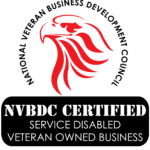In the realm of business, particularly in sectors like technology, consulting, and construction, securing lucrative contracts often begins with responding to Requests for Proposals (RFPs). These documents serve as a roadmap, outlining a client’s needs, expectations, and evaluation criteria. However, navigating an RFP requires more than just a cursory glance; it demands a methodical approach known as RFP shredding.
RFP shredding, a term gaining traction in the world of procurement and business development, refers to the meticulous deconstruction and analysis of an RFP to distill its essence. By dissecting the document piece by piece, organizations can glean crucial insights and craft tailored proposals that stand out amidst competition. Let’s delve deeper into this strategic process and explore the steps involved.
1. Read and Understand the RFP: The journey of RFP shredding begins with immersion. Thoroughly read and comprehend the RFP, paying close attention to nuances, objectives, and constraints. Understanding the client’s language and intent is paramount in deciphering the underlying requirements.
2. Break Down the RFP: Like a puzzle, an RFP comprises various components, from introductory sections to technical specifications. Divide the document into digestible sections, allowing for focused analysis and targeted response development.
3. Analyze Requirements: With the RFP dissected, scrutinize each requirement with a discerning eye. Identify key deliverables, project timelines, budget constraints, and evaluation criteria. This stage serves as the foundation for crafting a proposal that aligns seamlessly with the client’s expectations.
4. Create an Outline: Structure is the backbone of any proposal. Develop a cohesive outline mirroring the RFP sections, ensuring comprehensive coverage of all stipulated requirements. This framework not only streamlines the proposal writing process but also enhances readability and coherence.
5. Assign Responsibilities: Collaboration is key in RFP response preparation. Delegate tasks to team members based on expertise and allocate clear deadlines. Establishing accountability fosters efficiency and ensures timely completion of the proposal.
6. Develop the Proposal: Armed with insights gleaned from RFP shredding, craft a compelling proposal that addresses the client’s needs and aspirations. Tailor your messaging to resonate with the client’s objectives, showcasing your organization’s capabilities and value proposition.
7. Review and Revise: Perfection lies in the details. Conduct a meticulous review of the proposal, focusing on clarity, accuracy, and alignment with RFP requirements. Seek feedback from peers or subject matter experts and iterate as necessary to refine the proposal’s quality and coherence.
Embracing the art of RFP shredding empowers organizations to transcend the mundane and deliver proposals that captivate and persuade. By adhering to these systematic steps, businesses can navigate the intricacies of RFPs with finesse, elevating their chances of securing coveted contracts and fostering enduring client partnerships.
In the competitive landscape of business, mastering the art of RFP shredding is akin to wielding a potent weapon. By meticulously dissecting RFPs, organizations can unravel complexities, uncover opportunities, and craft proposals that resonate with clients on a profound level. As the adage goes, “The devil is in the details.” In the realm of RFP responses, success often hinges on the ability to discern those details and weave them into a narrative that captivates and convinces. So, embrace the challenge, hone your skills, and embark on the journey of RFP shredding with confidence and conviction. Your next contract win might just be a meticulously crafted proposal away.
RFP shredding is not merely a mechanical process but an art form that requires strategic thinking, attention to detail, and a deep understanding of the client’s needs. It’s about more than just responding to a list of requirements; it’s about crafting a narrative that resonates with the client and demonstrates your organization’s unique value proposition.
By following these steps, organizations can ensure that their proposals are not only compliant with the RFP but also compelling and persuasive. They can differentiate themselves from the competition and increase their chances of winning the bid.
RFP shredding is a critical step in the proposal development process. It allows organizations to break down complex RFP documents, analyze requirements, and develop tailored responses that maximize their chances of success. By following a systematic approach and leveraging the insights gained from RFP shredding, organizations can craft winning proposals that effectively address the client’s needs and objectives.



